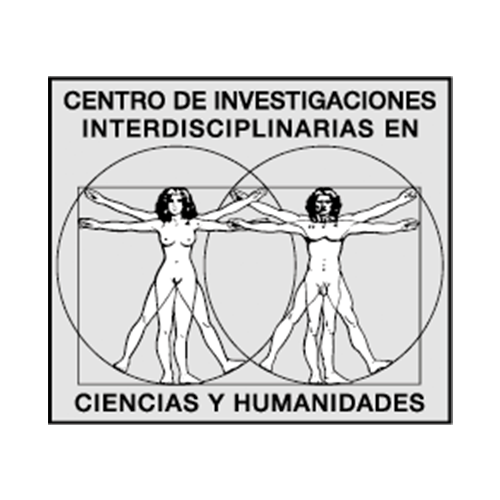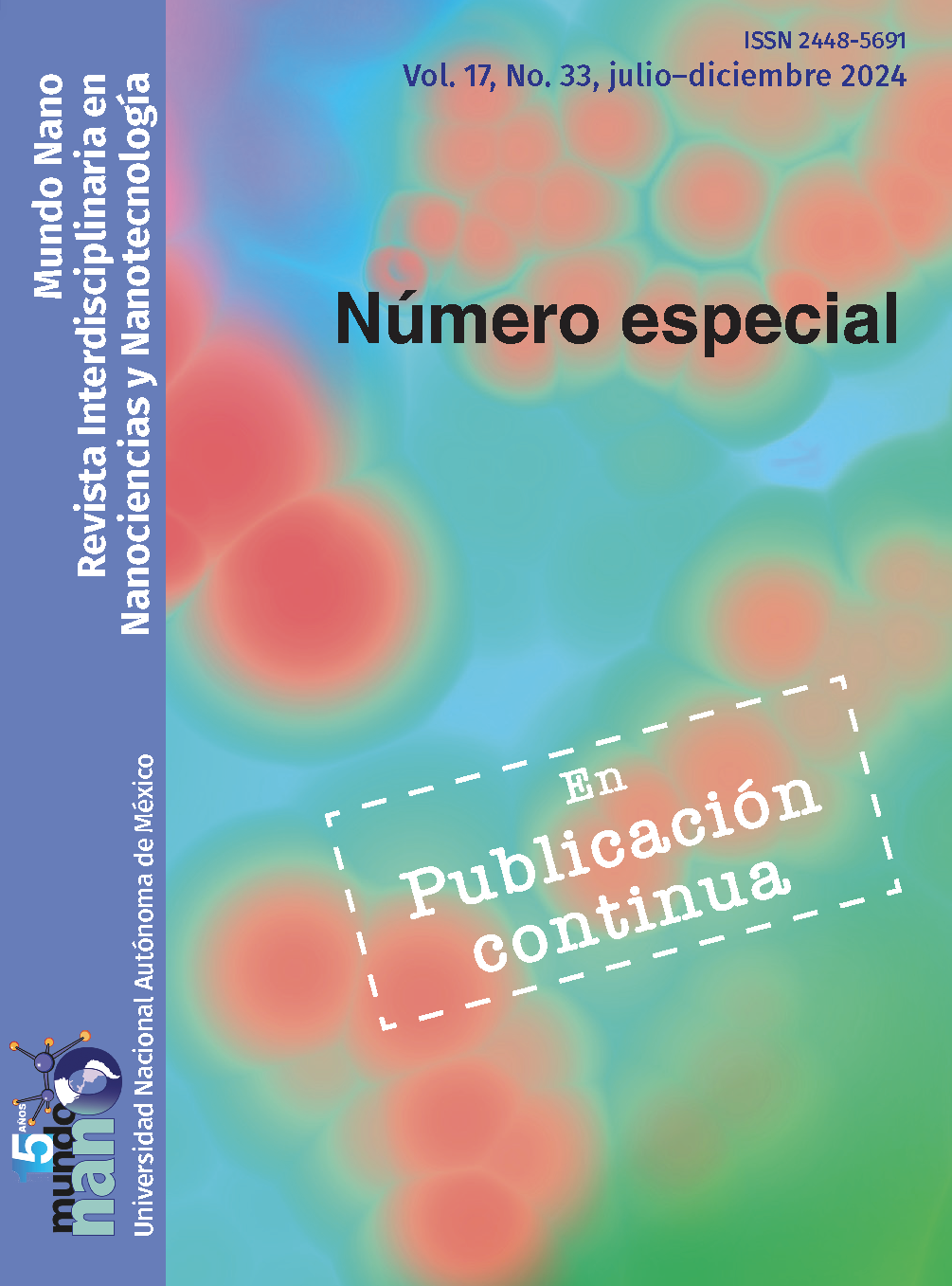Producción fotocatalítica de hidrógeno empleando semiconductores modificados con nanopartículas metálicas
Contenido principal del artículo
Resumen
Este trabajo de revisión se centra en la producción fotocatalítica de hidrógeno empleando agentes de sacrificio y semiconductores modificados con nanopartículas metálicas. Mientras que el uso de agentes de sacrificio reduce la energía requerida para la producción de hidrógeno y elimina los huecos fotogenerados, la modificación superficial de los semiconductores con nanopartículas metálicas cambia el flujo de los portadores de carga fotoinducidos, disminuyendo la recombinación de los pares electrón-hueco y aumentando la cantidad de sitios activos catalíticos para la reducción. Además, se describe el impacto de las técnicas electroquímicas y fotoelectroquímicas en la caracterización de los fotocatalizadores, la interfase semiconductor/electrolito y la modificación que tiene el nivel de Fermi cuando se ponen en contacto estos componentes. Dichas determinaciones electroquímicas brindan información sobre el diagrama de bandas (posiciones de banda de valencia y/o de conducción), estados energéticos del semiconductor, interacción del fotocatalizador con los co-catalizadores, separación de las especies electrón-hueco, aprovechamiento de la iluminación y resistencia a la transferencia de carga. La relación de la actividad fotocatalítica de los semiconductores y su caracterización electroquímica permite comprender los procesos de transferencia de carga involucrados en dicha reacción.
Descargas
Detalles del artículo

Mundo Nano. Revista Interdisciplinaria en Nanociencias y Nanotecnología, editada por la Universidad Nacional Autónoma de México, se distribuye bajo una Licencia Creative Commons Atribución-NoComercial 4.0 Internacional.
Basada en una obra en http://www.mundonano.unam.mx.
Citas
Acevedo-Peña, P. et al. (2011). Generación de estados superficiales durante la formación electroforética catódica de películas de TiO2 sobre ito. Química Nova, 34(3): 390-396. https://doi.org/10.1590/s0100-40422011000300005.
Armaroli, N. y Balzani, V. (2011). The hydrogen issue. Chem Sus Chem, 4(1): 21-36. https://doi.org/10.1002/cssc.201000182.
Arzate Salgado, S. Y. et al. (2016). Photocatalytic hydrogen production in a solar pilot plant using a Au/TiO2 photo catalyst. International Journal of Hydrogen Energy, 41(28): 11933-11940. https://doi.org/10.1016/j.ijhydene.2016.05.039.
Barrios, C. E. et al. (2016). Photocatalytic hydrogen production over titania modified by gold – metal (palladium, nickel and cobalt) catalysts. International Journal of Hydrogen Energy, 41(48): 23287-23300. https://doi.org/10.1016/j.ijhydene.2016.09.206.
Bedoya-Lora, F. E., Holmes-Gentle, I. y Hankin, A. (2021). Electrochemical techniques for photoelectrode characterisation. Current Opinion in Green and Sustainable Chemistry, 29: 100463. https://doi.org/10.1016/j.cogsc.2021.100463.
Beranek, R. (2011). (Photo)electrochemical methods for the determination of the band edge positions of TiO2-based nanomaterials. Advances in Physical Chemistry, 2011(Iv): 80-83. https://doi.org/10.1155/2011/786759.
Cai, Y. y Feng, Y. P. (2016). Review on charge transfer and chemical activity of TiO2: mechanism and applications. Progress in Surface Science, 91(4): 183-202. https://doi.org/ 10.1016/j.progsurf.2016.11.001.
Camposeco, R., Hinojosa-Reyes, M. y Zanella, R. (2021). Highly efficient photocatalytic hydrogen evolution by using Rh as co-catalyst in the Cu/TiO2 system. International Journal of Hydrogen Energy. https://doi.org/10.1016/j.ijhydene.2021.01.216.
Cao, S. et al. (2018). Effect of sacrificial agents on the dispersion of metal cocatalysts for photocatalytic hydrogen evolution. Applied Surface Science, 442: 361-367. https://doi.org/10.1016/j.apsusc.2018.02.105.
Chen, W. T. et al. (2015). Effect of TiO2 polymorph and alcohol sacrificial agent on the activity of Au/TiO2 photocatalysts for H2 production in alcohol-water mixtures. Journal of Catalysis, 329_ 499-513. https://doi.org/10.1016/j.jcat.2015.06.014.
Chen, X. et al. (2012). Nanomaterials for renewable energy production and storage. Chemical Society Reviews, 41(23): 7909-7937. https://doi.org/10.1039/c2cs35230c.
Chiarello, G. L., Aguirre, M. H. y Selli, E. (2010). Hydrogen production by photocatalytic steam reforming of methanol on noble metal-modified TiO2. Journal of Catalysis, 273(2): 182-190. https://doi.org/10.1016/j.jcat.2010.05.012.
Corredor, J. et al. (2019). Comprehensive review and future perspectives on the photocatalytic hydrogen production. Journal of Chemical Technology and Biotechnology, 94(10): 3049-3063. https://doi.org/10.1002/jctb.6123.
Davis, K. A. et al. (2021). Photocatalytic hydrogen evolution from biomass conversion. Nano Convergence, 8(1). https://doi.org/10.1186/s40580-021-00256-9.
Davis, S. J., Caldeira, K. y Matthews, H. D. (2010). Future CO2 emissions and climate change from exixting energy infrastructure. Science, 329: 1330-1333. https://doi.org/10.4324/9781315642352-9.
Durán-Álvarez, J. C., Zanella, R. y Oros-Ruíz, S. (2014). Superficial modification of semiconductors with gold nanoparticles for photocatalytic applications. RSC Catalysis Series, (18): 155-228, enero. https://doi.org/10.1039/9781782621645-00155.
Fajrina, N. y Tahir, M. (2019). A critical review in strategies to improve photocatalytic water splitting towards hydrogen production. International Journal of Hydrogen Energy, 44(2): 540-577. https://doi.org/10.1016/j.ijhydene.2018.10.200.
Gouda, A. et al. (2021). Best practices in photoelectrochemistry. Journal of Power Sources, 482: 228958, septiembre. https://doi.org/10.1016/j.jpowsour.2020.228958.
Grewe, T., Meggouh, M. y Tüysüz, H. (2016). Nanocatalysts for solar water splitting and a perspective on hydrogen economy. Chemistry – An Asian Journal, 11(1): 22-42. https://doi.org/10.1002/asia.201500723.
Guerrero-Araque, D. et al. (2017). Charge transfer processes involved in photocatalytic hydrogen production over CuO/ZrO2–TiO2 materials. International Journal of Hydrogen Energy, 42(15). https://doi.org/10.1016/j.ijhydene.2017.03.050.
Hankin, A. et al. (2019). Flat band potential determination: avoiding the pitfalls. Journal of Materials Chemistry A, 7(45): 26162-26176. https://doi.org/10.1039/c9ta09569a.
Hernández-Gordillo, A. et al. (2018). Photoreduction of 4-Nitrophenol in the presence of carboxylic acid using CdS nanofibers. Journal of Materials Science: Materials in Electronics, 29(9). https://doi.org/10.1007/s10854-018-8724-x.
Holladay, J. D. et al. (2009). An overview of hydrogen production technologies. Catalysis Today, 139(4): 244-260. https://doi.org/10.1016/j.cattod.2008.08.039.
Hou, W. y Cronin, S. B. (2013). A review of surface plasmon resonance-enhanced photocatalysi. Advanced Functional Materials, 23(13): 1612-1619. https://doi.org/10.1002/adfm.201202148.
Kocha, S. S. et al. (2017). Best practices and testing protocols for benchmarking ORR activities of fuel cell electrocatalysts using rotating disk electrode. Electrocatalysis, 8(4): 366-374. https://doi.org/10.1007/s12678-017-0378-6.
Kou, J. et al. (2017). Selectivity enhancement in heterogeneous photocatalytic transformations. Chemical Reviews, 117(3): 1445-1514. https://doi.org/10.1021/acs.chemrev.6b00396.
Kudo, A. y Miseki, Y. (2009). Heterogeneous photocatalyst materials for water splitting. Chemical Society Reviews, 38(1): 253-278. https://doi.org/10.1039/b800489g.
Kumaravel, V. et al. (2019). Photocatalytic hydrogen production: role of sacrificial reagents on the activity of oxide, carbon, and sulfide catalysts. Catalysts, 9(3). https://doi.org/10.3390/catal9030276.
Lewis, N. S. y Nocera, D. G. (2006). Powering the planet: chemical challenges in solar energy utilization. Proceedings of the National Academy of Sciences of the United States of America, 104(43): 15729-15735. https://doi.org/10.1073/pnas.0603395103.
Lin, W. C. et al. (2009). Hydrogen production from methanol/water photocatalytic decomposition using pt/tio2-xnx catalyst. Energy and Fuels, 23(4): 2192-2196. https://doi.org/10.1021/ef801091p.
Luna, A. L. et al. (2016). Synergetic effect of Ni and Au nanoparticles synthesized on titania particles for efficient photocatalytic hydrogen production. Applied Catalysis B: Environmental, 191: 18-28. https://doi.org/10.1016/j.apcatb.2016.03.008.
Ma, Z. et al. (2020). Highlighting unique function of immobilized superoxide on TiO2 for selective photocatalytic degradation. Separation and Purification Technology, 238: 116402, diciembre. https://doi.org/10.1016/j.seppur.2019.116402.
McGlade, C. y Ekins, P. (2015). The geographical distribution of fossil fuels unused when limiting global warming to 2 ºC. Nature, 517(7533): 187-190. https://doi.org/10.1038/nature14016.
Melián, E. P. et al. (2016). Study of the photocatalytic activity of Pt-modified commercial for hydrogen production in the presence of common organic sacrificial agents. Applied Catalysis A: General, 518: 189-197. https://doi.org/10.1016/j.apcata.2015.09.033.
Nguyen-Phan, T. D. et al. (2016). Visible light-driven H2 production over highly dispersed ruthenia on rutile TiO2 nanorods. ACS Catalysis, 6(1): 407-417. https://doi.org/10.1021/acscatal.5b02318.
Oros-Ruiz, S. et al. (2013). Photocatalytic hydrogen production by water/methanol decomposition using Au/TiO2 prepared by deposition-precipitation with urea. Journal of Hazardous Materials, 263(2013): 2-10. https://doi.org/10.1016/j.jhazmat.2013.03.057.
Oros-Ruiz, S. et al. (2014). Photocatalytic hydrogen production by Au-MxOy (MAg, Cu, Ni) catalysts supported on TiO2. Catalysis Communications, 47: 1-6. https://doi.org/10.1016/j.catcom.2013.12.033.
Primo, A., Corma, A. y García, H. (2011). Titania supported gold nanoparticles as photocatalyst. Physical Chemistry Chemical Physics, 13(3): 886-910. https://doi.org/10.1039/c0cp00917b.
Ramírez-Ortega, D. et al. (2020). Effect of Pd and Cu co-catalyst on the charge carrier trapping, recombination and transfer during photocatalytic hydrogen evolution over WO3–TiO2 heterojunction. Journal of Materials Science, 55(35): 16641-16658. https://doi.org/10.1007/s10853-020-05188-z.
Schneider, J. y Bahnemann, D. W. (2013). Undesired role of sacrificial reagents in photocatalysis. Journal of Physical Chemistry Letters, 4(20): 3479-3483. https://doi.org/10.1021/jz4018199.
Toe, C. Y. et al. (2021). Advancing photoreforming of organics: highlights on photocatalyst and system designs for selective oxidation reactions. Energy and Environmental Science, 14(3): 1140-1175. https://doi.org/10.1039/d0ee03116j.
Walter, M. G. et al. (2010). Solar water splitting cells. Chemical Reviews, 110(11): 6446-6473. https://doi.org/10.1021/cr1002326.
Xu, Z. et al. (2018). Towards enhancing photocatalytic hydrogen generation: which is more important, alloy synergistic effect or plasmonic effect? Applied Catalysis B: Environmental, 221: 77-85. https://doi.org/10.1016/j.apcatb.2017.08.085.
Zada, A. et al. (2016). Exceptional visible-light-driven cocatalyst-free photocatalytic activity of g-C3N4 by well designed nanocomposites with plasmonic Au and SnO2. Advanced Energy Materials, 6(21). https://doi.org/10.1002/aenm.201601190.
Zada, A. et al. (2020). Surface plasmonic-assisted photocatalysis and optoelectronic devices with noble metal nanocrystals: design, synthesis, and applications. Advanced Functional Materials, 30(7): 1-29. https://doi.org/10.1002/adfm.201906744.
Zhang, P., Wang, T. y Gong, J. (2018). Current mechanistic understanding of surface reactions over water-splitting photocatalysts. Chem, 4(2): 223-245. https://doi.org/ 10.1016/j.chempr.2017.11.003.





